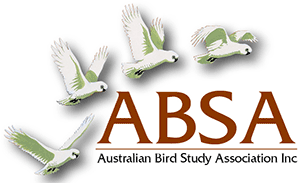POST-JUVENILE MOULT STRATEGIES OF CO-EXISTING GOULDIAN, LONG-TAILED AND MASKED FINCHES
| Posted: |
29/07/2021 |
| Author(s): |
Donald C. Franklin, P. L. Dostine, Sonia C. Tidemann |
The post-juvenile moult strategies of three co-existing woodland finch species in monsoonal northern Australia
were compared. Juvenile Gouldian Finches tended to moult at the same time of year as each other regardless of
age, whereas in juvenile Long-tailed and Masked Finches the commencement of moult was progressive through the
year and may be related more directly to the age of the individual. Gouldian Finches retained obvious juvenile
characters for longer than the other species. Juvenile Gouldian Finches undertook only a partial post-juvenile primary
moult in their first year whereas in the Long-tailed and Masked Finch, the primary moult was complete. Primary
moult of juvenile Masked Finches was more rapid than that of either Gouldian or Long-tailed Finches. In all three
species, the post-juvenile primary moult occurred at the same time as that of adults. Juvenile Long-tailed and Masked
Finches undertook this moult at a similar rate to adults. In contrast, the post-juvenile primary moult of the Gouldian
Finch was much slower than that of adults, and the partial primary moult is probably required in order to finish the
moult prior to Wet season dispersal. Juvenile Gouldian Finches moult at a time of the year when food availability is
low. This is a seemingly anomalous and potentially stressful situation about which they may have little evolutionary
choice given that Gouldian Finches are highly mobile exploiters of ephemeral food sources in the Wet season.
>> Download Abstract |
File Size: 104KB
>> Download Complete PDF | File Size: 912KB
